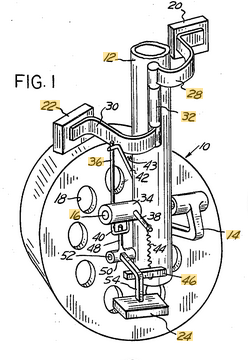If you think about military crypto machines, you probably think about the infamous Enigma machine. However, as [Christos T.] reminds us, there were many others and, in particular, the production of a “combined cipher” machine for the US and the UK to use for a variety of purposes.
The story opens in 1941 when ships from the United States and the United Kingdom were crossing the Atlantic together in convoys. The US wanted to use the M-138A and M-209 machines, but the British were unimpressed. They were interested in the M-134C, but it was too secret to share, so they reached a compromise.
Starting with a British Typex, a US Navy officer developed an attachment with additional rotors and converted the Typex into a CCM or Combined Cipher Machine. Two earlier verisons of the attachment worked with the M-134C. However the CSP 1800 (or CCM Mark III) was essentially the same unit made to attach to the Typex. Development cost about $6 million — a huge sum for the middle of last century.


















